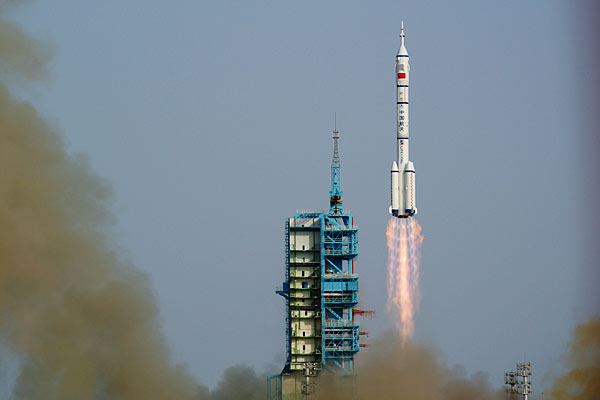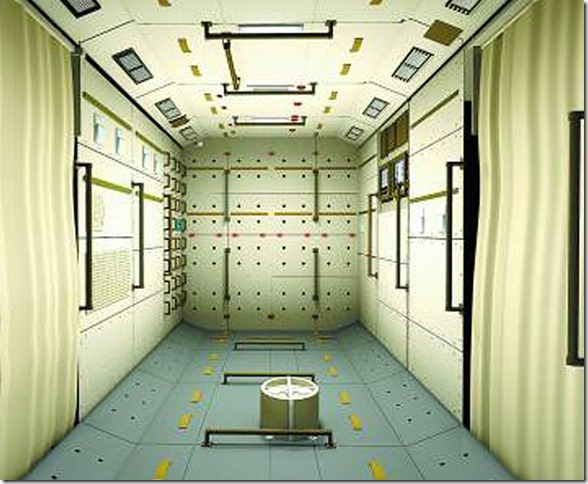
China is gearing up to perform its first-ever manned space docking Monday (June 18), a feat that would put it in the company of history's two greatest spacefaring nations, the United States and Russia.
China's Shenzhou 9 space capsule — which launched Saturday (June 16) carrying three astronauts, including the country's first female spaceflyer — is expected to link up with the unmanned Tiangong 1 space lab around 3 p.m. Monday Beijing time (3 a.m. EDT; 0700 GMT), according to Chinese media reports.
To date, the only two countries to pull off a manned orbital docking are the United States and the Soviet Union/Russia, which first did so in 1966 and 1969, respectively.
Shenzhou 9 will dock with Tiangong 1 twice, with the first hookup being automated. At some point, the two spacecraft will separate, and the three taikonauts, as China's astronauts are known, will perform the second docking manually.
Forty-six-year-old Jing Haipeng leads the taikonaut crew, which also includes Liu Wang, 42, and 33-year-old Liu Yang, China's first female astronaut. All are members of the Communist Party of China and former pilots with the People's Liberation Army; Jing flew on China's last manned spaceflight, which took place in 2008.
Two of the taikonauts will live aboard Tiangong 1 during the 13-day mission, while one will stay aboard Shenzhou 9 at all times in case of emergency, Chinese officials have said.

Shenzhou-9's flight is considered a key step in China's plan to build a permanently staffed space station in Earth orbit. The nation hopes to have a 60-ton station and up and running by 2020. (For comparison, the International Space Station weighs about 430 tons.)
Get the Space.com Newsletter
Breaking space news, the latest updates on rocket launches, skywatching events and more!
While Shenzhou 9's flight is China's first attempt at a crewed space docking, the nation has successfully linked up two robotic spacecraft in orbit. In November, the unmanned Shenzhou 8 craft docked twice with Tiangong 1 before returning safely to Earth.
Shenzhou 9's mission is China's fourth manned spaceflight, following taikonaut launches in 2003, 2005 and 2008. Another manned mission to Tiangong 1 — which launched to orbit in September 2011 — could come later this year, Chinese officials have said.
Follow SPACE.com senior writer Mike Wall on Twitter @michaeldwall or SPACE.com @Spacedotcom. We're also on Facebook and Google+.
Join our Space Forums to keep talking space on the latest missions, night sky and more! And if you have a news tip, correction or comment, let us know at: community@space.com.

Michael Wall is a Senior Space Writer with Space.com and joined the team in 2010. He primarily covers exoplanets, spaceflight and military space, but has been known to dabble in the space art beat. His book about the search for alien life, "Out There," was published on Nov. 13, 2018. Before becoming a science writer, Michael worked as a herpetologist and wildlife biologist. He has a Ph.D. in evolutionary biology from the University of Sydney, Australia, a bachelor's degree from the University of Arizona, and a graduate certificate in science writing from the University of California, Santa Cruz. To find out what his latest project is, you can follow Michael on Twitter.









